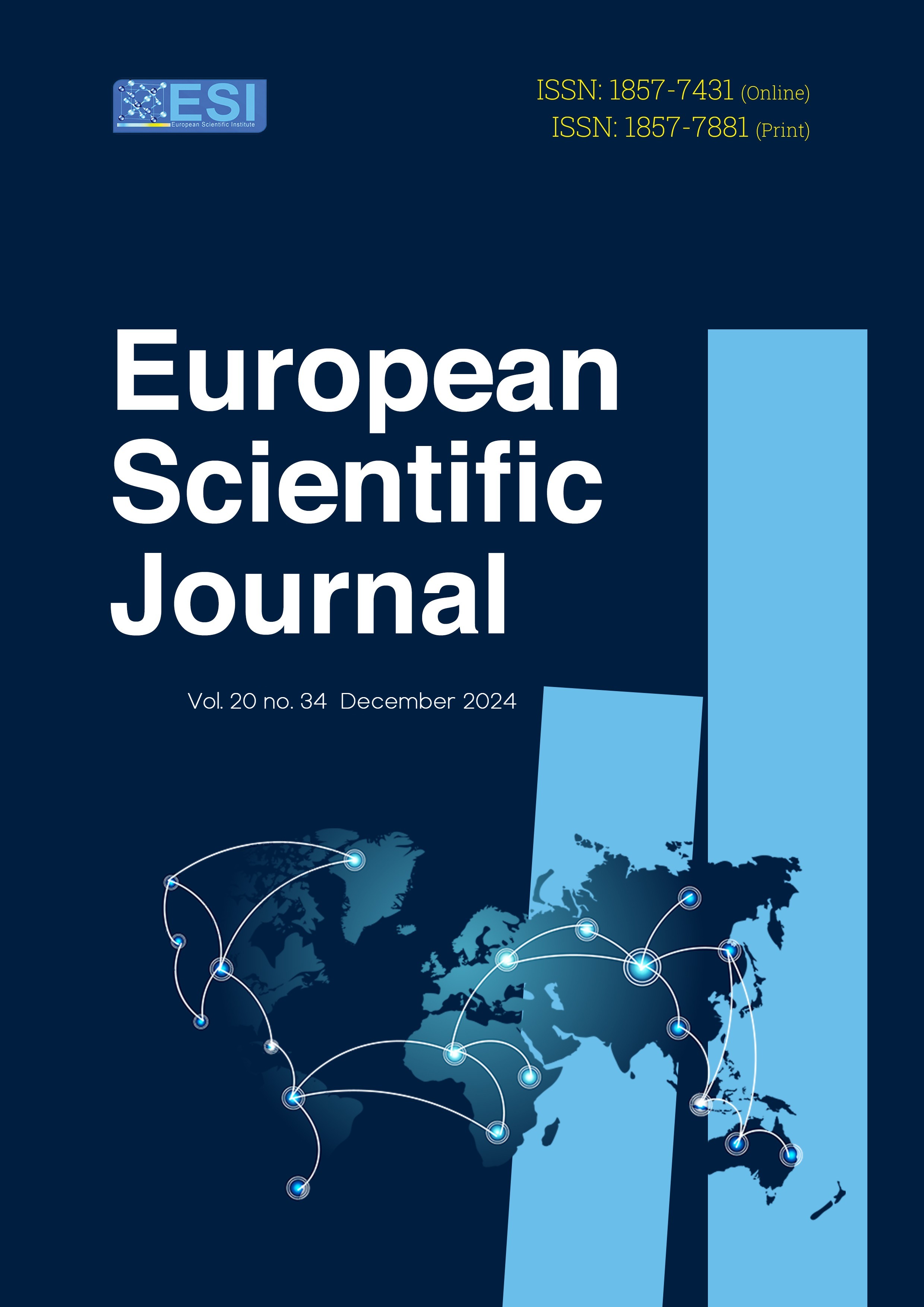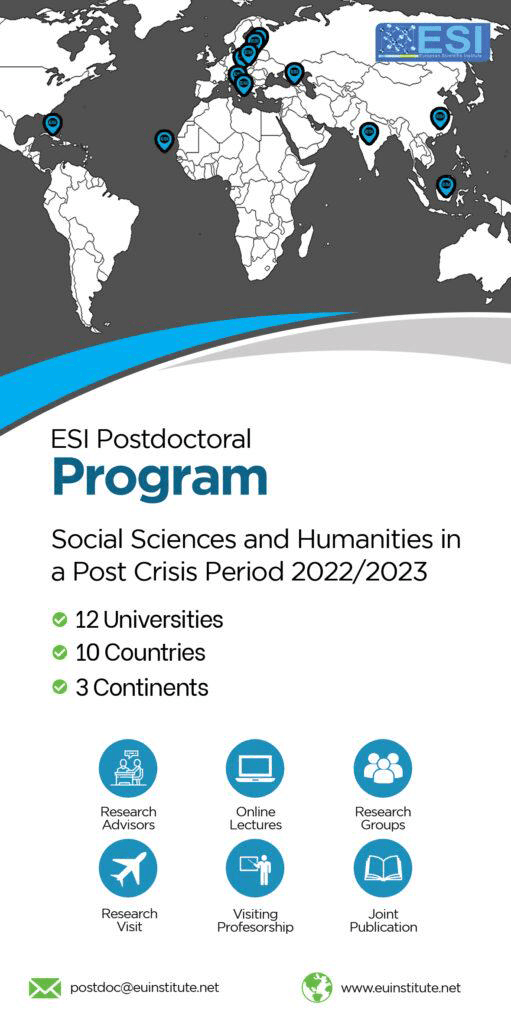Decoupling and EKC in European Union countries: A shiftshare decomposition of air emissions
Abstract
This paper examines the non-linear effect of per capita GDP growth rate, trade openness, physical and human capital endowments on air pollution in the EU region over the period 2008-2016 by decomposing air emissions into scale, composition and technique effects. Results show a negative non-linear relationship between greenhouse and acidifying gases emissions and per capita GDP growth rate, with more open economies tending to reduce emissions both directly and indirectly through investment in physical capital. The determinants mainly affect the scale component, although the environmental improvement due to capital investment works through the technique component. There are heterogeneous effects across countries, with more pronounced environmental benefits for countries in the higher deciles of GDP and trade growth rates.
Downloads
Metrics
PlumX Statistics
References
2. Ang, B. W. (2004). Decomposition analysis for policymaking in energy: which is the preferred method?. Energy Policy, 9, 1131-1139, https://doi.org/10.1016/S0301-4215(03)00076-4
3. Ang, B. W. (2015). LMDI decomposition approach: A guide for implementation. Energy Policy, 86, 233-238, https://doi.org/10.1016/j.enpol.2015.07.007
4. Ang, B. W. & Choi, K. I. (1997). Decomposition of the aggregate energy gas emission intensities for industry: a refined Divisia index method. The Energy Journal, 18(3), 59-73, https://www.jstor.org/stable/41322738
5. Ang, B. W. & Zhang, F. Q. (2000). A survey of index decomposition analysis in energy and environmental studies. Energy, 25(12), 1149-1176, https://doi.org/10.1016/S0360-5442(00)00039-6
6. Antweiler, W., Copeland, B. R., &Taylor M. S. (2001). Is free trade good for environment?. American Economic Review, 91, 877-908, DOI: 10.1257/aer.91.4.877
7. Baldwin, R. (1995). Does Sustainability Require Growth?, in: Goldin I., Winters L. A., eds. The Economics of Sustainable Development, Cambridge University Press, 51-79.
8. Bianco, V., Cascetta, F. & Nardini, S. (2024). Analysis of the carbon emissions trend in European Union. A decomposition and decoupling approach. Science of The Total Environment, 909, 168528, https://doi.org/10.1016/j.scitotenv.2023.168528
9. Bruvoll, A. & Medin, H. (2003). Factors Behind the Environmental Kuznets Curve: A Decomposition of the Changes in Air Pollution. Environmental and Resource Economics, 24, 27-48, https://doi.org/10.1023/A:1022881928158
10. Churchill, S. A., Inekwe, J., Ivanovski, K. & Smyth, R. (2018). The Environmental Kuznets Curve in the OECD: 1870–2014. Energy Economics, 75, 389-399, https://doi.org/10.1016/j.eneco.2018.09.004
11. Cole, M.A. & Elliott, R.J.R. (2003). Determining the Trade–Environment Composition Effect: The Role of Capital, Labor and Environmental Regulations. Journal of Environmental Economics and Management, 46, 363-383, https://doi.org/10.1016/S0095-0696(03)00021-4
12. Caporin, M., Cooray, A., Kuziboev, B. & Yusubov, I. (2024). New insights on the environmental Kuznets curve (EKC) for Central Asia. Empirical Economics, 66, 2335–2354, https://doi.org/10.1007/s00181-023-02520-9
13. Copeland, B. R. & Taylor, M. S. (1994). North-south trade and the environment, Quarterly Journal of Economics, 109, 755-787, https://doi.org/10.2307/2118421
14. Davidson, R. & MacKinnon, J. G. (1993). Estimation and Inference in Econometrics, New York Oxford University Press
15. De Bruyn, S. M. (1997). Explaining the environmental Kuznets curve: structural change and international agreements in reducing sulphur emissions. Environment and Development Economics, 2(4), 485-508, http://www.jstor.org/stable/44379190
16. EC, Directorate-General for Climate Action. (2017). Decomposition analysis of the changes in GHG emissions in the EU and Member States – Final report, https://data.europa.eu/doi/10.2834/397144
17. EPRS (2020). Decoupling economic growth from environmental harm. Authors: Noonan, E. & Vrizzi, S. Global Trends Unit PE 651.916
18. Gallant, A. R. (1975), Seemingly unrelated nonlinear regressions. Journal of Econometrics, 3(1), 35-50, https://doi.org/10.1016/0304-4076(75)90064-0
19. Grossman, G. M. & Krueger, A. B. (1991). Environmental impact of a North American Free Trade Agreement, NBER Working Paper Series, 3914, DOI: 10.3386/w3914
20. Hipólito Leal, P. & Cardoso Marques, A. (2022). The evolution of the environmental Kuznets curve hypothesis assessment: A literature review under a critical analysis perspective. Heliyon, 8(11), e11521, DOI: 10.1016/j.heliyon.2022.e11521
21. Jiang, J.-J., Ye, B., Zhou, N. & Zhang, X.-L. (2019). Decoupling analysis and environmental Kuznets curve modelling of provincial-level CO2 emissions and economic growth in China: A case study, Journal of Cleaner Production, 212, 1242-1255, https://doi.org/10.1016/j.jclepro.2018.12.116
22. Lv, D. & Wang, Z. (2022). Analysis of Agricultural CO2 Emissions in Henan Province, China, Based on EKC and Decoupling. Sustainability, 14(3), 1931, https://doi.org/10.3390/su14031931
23. Meadows, D. H., Meadows, D. L., Randers, J. & Behrens, W. III (1972). The Limits to Growth. A report for the club of rome's project on the predicament of mankind. Universe Books, New York
24. Naqvi, A. (2021). Decoupling trends of emissions across EU regions and the role of environmental policies. Journal of Cleaner Production, 323, 129130, https://doi.org/10.1016/j.jclepro.2021.129130
25. Papież, M., Śmiech, S., Frodyma, K. (2022). Does the European Union energy policy support progress in decoupling economic growth from emissions?. Energy Policy, 170, 113247, https://doi.org/10.1016/j.enpol.2022.113247
26. Sanyé-Mengual, E., Secchi, M., Corrado, S., Beylot, A. & Sala, S. (2019). Assessing the decoupling of economic growth from environmental impacts in the European Union: A consumption-based approach. Journal of Cleaner Production, 236, 117535, https://doi.org/10.1016/j.jclepro.2019.07.010
27. Selden, T. M. & Song, D. (1994). Environmental quality and development: is there a Kuznets curve for air pollution?. Journal of Environmental Economics and Management, 29, 147-162, https://doi.org/10.1006/jeem.1994.1031
28. Shafik, N. & Bandyopadhyay, S. (1992). Economic growth and environmental quality: time series and cross-country evidence. Policy Research Working Paper Series, 904, The World Bank
29. UNEP. (2011). Decoupling natural resource use and environmental impacts from economic growth. https://wedocs.unep.org/20.500.11822/9816
30. Viguier, L. (1999). Emissions of SO₂, NOx and CO₂ in Transition Economies: Emission Inventories and Divisia Index Analysis. The Energy Journal, 20(2), 59-87, http://www.jstor.org/stable/41322830
31. Wang, Q. & Zhang, F. (2021). The effects of trade openness on decoupling carbon emissions from economic growth – Evidence from 182 countries. Journal of Cleaner Production, 279, 123838, https://doi.org/10.1016/j.jclepro.2020.123838
32. Wang, Z. & Kim, M. K. (2024). Decoupling of CO2 emissions and income in the U.S.: A new look from EKC. Climatic Change, 177(52), https://doi.org/10.1007/s10584-024-03706-5
33. Wood, R. & Lenzen, M. (2006). Zero-value problems of the logarithmic mean divisia index decomposition method. Energy Policy, 34, 1326-1331, https://doi.org/10.1016/j.enpol.2004.11.010
34. Zhao, X., Zhang, X., Li, N., Shao, S. & Geng, Y. (2017). Decoupling economic growth from carbon dioxide emissions in China: A sectoral factor decomposition analysis, Journal of Cleaner Production, 142(4), 3500-3516, https://doi.org/10.1016/j.jclepro.2016.10.117
Copyright (c) 2024 Chiara Lodi, Silvia Bertarelli

This work is licensed under a Creative Commons Attribution 4.0 International License.








